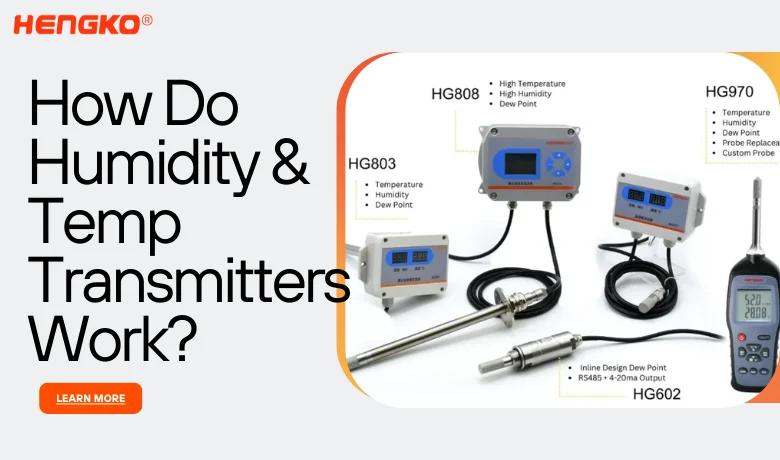Dlaczego warto monitorować punkt rosy azotu?
W wielu zastosowaniach przemysłowych azot odgrywa kluczową rolę. Jednak azot nie zawsze jest idealnie suchy. W tym miejscu pojawia się punkt rosy. Monitorowanie punktu rosy azotu ma zasadnicze znaczenie dla zapewnienia jakości procesu i ochrony sprzętu. Oto dlaczego:
Znaczenie suchego azotu: Wiele gałęzi przemysłu polega na azocie ze względu na jego obojętne właściwości, co oznacza, że nie reaguje on łatwo z innymi substancjami. Dzięki temu idealnie nadaje się do usuwania tlenu, zapobiegania korozji i zachowania integralności materiałów. Jednak wilgoć może zniweczyć te korzyści.
Wpływ wilgoci: Gdy w grę wchodzi wilgoć, pojawiają się problemy. Kondensacja może tworzyć się w rurach i sprzęcie, prowadząc do rdzewienia, zamarzania, a nawet zatorów. Na przykład w przypadku pakowania żywności wilgoć może powodować psucie się produktów, sprzyjając rozwojowi bakterii. Podobnie w produkcji elektroniki, wilgoć może uszkodzić delikatne komponenty.
Monitorowanie punktu rosy: Punkt rosy to temperatura, w której para wodna w gazie skrapla się w ciecz. Monitorując punkt rosy azotu, branże mogą zapewnić, że gaz pozostaje wystarczająco suchy, aby zapobiec tym problemom. Regularne monitorowanie punktu rosy pozwala na interwencję w odpowiednim czasie, taką jak zastosowanie osuszaczy lub dostosowanie systemów filtracji, w celu utrzymania pożądanego poziomu suchości dostarczanego azotu.
Podsumowując, uważne monitorowanie punktu rosy azotu jest krytyczną praktyką w różnych branżach. W ten sposób firmy mogą chronić swój sprzęt, utrzymywać jakość produktu, a ostatecznie zapewnić płynne i wydajne działanie.
Jaki jest punkt rosy azotu?
Znajomość punktu rosy azotu jest niezbędna w zastosowaniach przemysłowych. Oto zestawienie:
Definicja punktu rosy: Punkt rosy odnosi się do temperatury, w której para wodna w gazie skrapla się w ciekłą wodę. Jest to "punkt krytyczny", w którym gaz staje się nasycony wilgocią.
Azot i punkt rosy: Mimo że azot sam w sobie nie zawiera wody, nadal może zatrzymywać pewną ilość wilgoci w postaci pary. Im zimniejszy jest gaz, tym mniej pary wodnej może zatrzymać. Gdy temperatura spada do punktu rosy, para skrapla się w małe kropelki wody.
Znaczenie w przemyśle: W warunkach przemysłowych azot jest często wykorzystywany ze względu na swój obojętny charakter - nie wchodzi w reakcje z innymi materiałami. Jeśli jednak azot zawiera zbyt dużo wilgoci, może powodować poważne problemy. Oto dlaczego punkt rosy ma znaczenie:
Problemy z kondensacją: Gdy azot schładza się poniżej punktu rosy w rurach lub urządzeniach, para wodna skrapla się. Ta kondensacja może prowadzić do rdzy, zamarzania komponentów, a nawet blokowania rurociągów.
Kwestie jakości produktów: W zastosowaniach takich jak pakowanie żywności, nadmiar wilgoci w azocie może sprzyjać rozwojowi bakterii i psuciu się żywności. Podobnie w produkcji elektroniki, skroplona woda może uszkodzić wrażliwe komponenty elektroniczne.
Znając punkt rosy azotu używanego w procesie, branże mogą zapewnić, że gaz pozostanie wystarczająco suchy, aby zapobiec tym problemom.

Ile wilgoci może zatrzymać azot?
W przeciwieństwie do tego, czego można by się spodziewać, azot sam w sobie nie "zatrzymuje" wilgoci w tradycyjnym tego słowa znaczeniu. Oto dlaczego:
Brak wiązań chemicznych: Cząsteczki azotu (N₂) są niepolarne, co oznacza, że dzielą się elektronami po równo. To sprawia, że jest mało prawdopodobne, aby tworzyły silne wiązania chemiczne z cząsteczkami wody (H₂O). W przeciwieństwie do niektórych materiałów pochłaniających parę wodną, azot nie przyciąga ani nie zatrzymuje wilgoci.
Dzielenie się przestrzenią: Zamiast zatrzymywać wilgoć, azot po prostu dzieli dostępną przestrzeń z parą wodną. Ilość wilgoci, jaką może "pomieścić" azot, zależy od kilku czynników:
Temperatura: Ciepłe powietrze może zatrzymać więcej pary wodnej niż zimne. W miarę ochładzania się azotu, jego zdolność do zatrzymywania pary wodnej maleje. Właśnie dlatego punkt rosy jest tak istotnym pojęciem - oznacza temperaturę, w której obecna ilość wilgoci staje się zbyt duża, aby gaz mógł zatrzymać parę wodną, co prowadzi do kondensacji.
Ciśnienie: Wyższe ciśnienie pozwala większej liczbie cząsteczek wszystkich typów, w tym pary wodnej, na zajęcie danej przestrzeni. Tak więc sprężony azot może technicznie zatrzymać więcej wilgoci niż azot pod ciśnieniem atmosferycznym.
It’s All Relative: Even though nitrogen doesn’t form strong bonds with water, it’s not completely moisture-proof. There will always be some level of moisture present, but the key is keeping it below the dew point to prevent condensation.
In essence, nitrogen gas acts more like a neutral bystander when it comes to moisture. The amount of moisture it can “tolerate” depends on the temperature and pressure, ultimately influencing the dew point. By understanding these factors, industries can ensure their nitrogen supply remains dry enough for their specific needs.
Jak sprawdzić zawartość wilgoci w gazowym azocie?
Maintaining proper moisture levels in nitrogen gas is crucial for various industrial applications. Here’s how to check the moisture content:
-
Measurement Methods: There are two primary methods for measuring moisture in nitrogen gas:
Dew Point Meters: These instruments directly measure the dew point temperature of the gas. When the gas cools to the dew point within the meter, condensation forms on a chilled mirror. The temperature at which this occurs is the dew point, providing a direct indication of the moisture content.
-
Hygrometers: These instruments measure various aspects of humidity, including moisture content. There are different types of hygrometers, but for nitrogen gas, chilled mirror hygrometers are commonly used. They function similarly to dew point meters, using a chilled mirror to determine the dew point.
-
Using Dew Point Meters and Hygrometers: The specific steps for using these instruments can vary depending on the model. However, here’s a general guide:
-
Preparation: Ensure the instrument is properly calibrated and set up according to the manufacturer’s instructions. Connect the instrument to the nitrogen gas line using appropriate fittings and tubing.
-
Flow Initiation: Start the flow of nitrogen gas through the instrument at a controlled rate.
-
Pomiar: For dew point meters, observe the instrument’s display as the gas cools. The dew point will be displayed once condensation forms on the mirror. For hygrometers, the specific moisture content reading will depend on the instrument type.
-
Recording and Analysis: Record the measured dew point or moisture content value. Compare this value to the desired moisture specification for your specific application.
-
-
Dodatkowe uwagi:
- Safety: Always follow safety protocols when working with compressed gases.
- Instrument Selection: Choose an instrument with a suitable dew point or moisture content measurement range for your nitrogen application.
- Kalibracja: Regularly calibrate your instrument to ensure accurate measurements.
By following these steps and considering the factors involved, you can effectively monitor the moisture content in your nitrogen gas using dew point meters or hygrometers. This helps maintain optimal dryness for your specific industrial processes.
W jakiej temperaturze skrapla się azot?
Nitrogen gas itself doesn’t condense at a specific temperature. The key concept here is the dew point, which we’ve discussed previously.
Condensation vs. Dew Point: Condensation temperature refers to the temperature at which a gas reaches its saturation point for a specific vapor (like water vapor in this case). However, the dew point is a more practical measure because it reflects the actual moisture content in the gas and the temperature at which condensation will occur.
Factors Influencing Condensation in Nitrogen: While nitrogen itself doesn’t condense, the water vapor it carries does. The temperature at which this water vapor condenses depends on two main factors:
Moisture Content: The more moisture present in the nitrogen gas, the higher the dew point (and the warmer the temperature needed for condensation). Conversely, drier nitrogen will have a lower dew point and will condense at a colder temperature.
Ciśnienie: Pressure plays a role as well. Higher pressure allows for more water vapor molecules to occupy the same space. Therefore, nitrogen gas at higher pressure will have a higher dew point compared to nitrogen at the same temperature but lower pressure.
Case Study: Imagine two samples of nitrogen gas:
- Sample A: Contains more moisture (higher dew point). This sample might condense at -50°C (depending on the exact moisture content).
- Sample B: Drier (lower dew point). This sample might require a colder temperature, perhaps -70°C, to reach its dew point and cause condensation.
Kalkulator punktu rosy azotu
While directly measuring moisture content with dew point meters or hygrometers is the most accurate approach, there are also nitrogen dew point calculators available.
What are they? These calculators are online tools or software programs that estimate the dew point of nitrogen gas based on user-provided inputs.
How do they work? These calculators typically use formulas that incorporate factors like temperature, pressure, and sometimes even relative humidity (if the calculator accounts for the surrounding air where the nitrogen is located).
Using a Nitrogen Dew Point Calculator: The specific steps will vary depending on the calculator, but here’s a general idea:
Locate a Calculator: Search online for “nitrogen dew point calculator.” Several reputable sources offer these tools.
Input Values: Enter the required information, which typically includes:
- Nitrogen Temperature: The current temperature of the nitrogen gas.
- Ciśnienie: The pressure of the nitrogen gas (optional in some calculators).
- Relative Humidity (Optional): If the calculator factors in surrounding air, you might need to input the relative humidity of the environment where the nitrogen is located.
Calculate: Click the “calculate” button.
Interpret Results: The calculator will display the estimated dew point temperature of the nitrogen gas based on your inputs.
Important Considerations:
- Dokładność: These calculators provide estimates and may not be as precise as direct measurement with dew point meters or hygrometers.
- Limitations: Some calculators might have limitations on the pressure or temperature range they can handle. Ensure the chosen calculator suits your specific application.
- Real-world Use: While calculators can be a helpful starting point, for critical industrial processes, direct measurement with reliable instruments is recommended.
By understanding the purpose and limitations of nitrogen dew point calculators, you can effectively utilize them alongside, or as a preliminary step to, direct measurement techniques for monitoring the moisture content of your nitrogen gas.

Wykres punktu rosy azotu
A nitrogen dew point chart is a handy reference tool that provides a quick estimate of the moisture content in nitrogen gas based on its temperature. Here’s how to understand and use one:
What it is:
- This chart typically displays two main columns: temperature (usually in °C or °F) and dew point (also in °C or °F).
How to Read it:
Locate Temperature: Find the temperature of your nitrogen gas on the chart’s temperature column.
Match the Dew Point: Look across the row from that temperature to find the corresponding dew point value. This value indicates the temperature at which water vapor in the nitrogen would condense if the gas were cooled to that point.
Example Chart:
| Temperature (°C) | Dew Point (°C) |
|---|---|
| 20 | -40 |
| 10 | -50 |
| 0 | -60 |
| -10 | -70 |
| -20 | -80 |
Interpreting the Example:
- In this example, if your nitrogen gas is at 20°C, the dew point is -40°C. This means the nitrogen can hold the current amount of moisture without condensation as long as the temperature stays above -40°C.
- If the temperature drops below -40°C, water vapor in the nitrogen will start to condense, potentially leading to issues like freezing or blockages.
Important Considerations:
- Pressure Dependence: These charts often assume a specific pressure (e.g., atmospheric pressure). If your nitrogen is at a significantly different pressure, the actual dew point might deviate from the chart’s values.
- Estimation Tool: Charts offer a general idea, not a precise measurement. For critical applications, using dew point meters or hygrometers remains the most accurate approach.
Using the Chart:
Nitrogen dew point charts can be a helpful starting point for:
- Quick Reference: Get a ballpark estimate of the moisture content in your nitrogen gas based on its temperature.
- Troubleshooting: If you’re experiencing issues potentially related to moisture in your nitrogen (e.g., freezing, blockages), the chart can help identify if the temperature might be dipping below the dew point.
Tips: While charts provide a valuable starting point, for critical industrial processes or situations requiring high accuracy, direct measurement with dew point meters or hygrometers is recommended.
Punkt rosy azotu w stopniach Celsjusza
The dew point of nitrogen, and most industrial applications in general, is predominantly measured and reported in degrees Celsius (°C). Here’s why:
Global Standard: Degrees Celsius is the most widely used unit for temperature measurement in scientific and industrial contexts. This ensures consistency and ease of communication across different countries and industries.
Direct Relationship: The dew point concept itself is directly related to the behavior of water vapor, which condenses into liquid water at 0°C. Using Celsius keeps the scale aligned with this physical phenomenon.
Conversion Considerations: While °C is the standard, some situations might require conversion to other temperature scales like Fahrenheit (°F) or Kelvin (K). Thankfully, there are simple conversion formulas to handle this:
- To convert from °C to °F: (°C × 9/5) + 32
- To convert from °C to K: °C + 273.15
Measuring Dew Point:
There are two main instruments used to directly measure the dew point of nitrogen gas, both typically displaying results in °C:

Punkt rosy suchego azotu
Dry nitrogen gas plays a crucial role in numerous industrial processes. Here’s what defines dry nitrogen and how its dew point matters:
-
Characteristics: “Dry” refers to the minimal amount of moisture (water vapor) present in the nitrogen gas. Ideally, we want the nitrogen to be as inert (non-reactive) as possible. Moisture can disrupt this inertness, so keeping the dew point low is essential.
-
Dew Point Significance: As discussed earlier, the dew point is the temperature at which water vapor in the gas condenses into liquid water. For dry nitrogen, we want the dew point to be very low (ideally well below the operating temperature of the process). This ensures the moisture stays vaporized and doesn’t cause problems.
-
Benefits of Dry Nitrogen: Here’s why various industries rely on dry nitrogen:
-
Prevents Corrosion: Moisture can lead to rust and other forms of corrosion in equipment and materials. Dry nitrogen helps prevent this by creating an oxygen-free and moisture-free environment.
-
Maintains Product Quality: In applications like food packaging and electronics manufacturing, even small amounts of moisture can damage or degrade products. Dry nitrogen keeps moisture at bay, ensuring product quality and integrity.
-
Enhances Process Efficiency: Condensation due to high moisture content can lead to blockages in pipes and equipment. Dry nitrogen promotes smooth operation by preventing these issues.
-
Promotes Safe Storage: For materials sensitive to moisture, dry nitrogen can be used to create a controlled environment during storage, preventing spoilage or degradation.
-
Examples of Dry Nitrogen Applications:
-
Food Packaging: Flushing food packaging with dry nitrogen expels oxygen and moisture, extending shelf life and preventing spoilage.
-
Electronics Manufacturing: Dry nitrogen is used during soldering and other processes to prevent oxidation and moisture-related damage to delicate electronic components.
-
Metal Fabrication: Dry nitrogen is used to prevent oxidation during heat treatment processes for metals.
-
Przetwarzanie chemiczne: Dry nitrogen is used to purge equipment and materials to prevent unwanted reactions caused by moisture or oxygen.
Obtaining Dry Nitrogen:
There are various methods for obtaining dry nitrogen, including:
-
Pressure Swing Adsorption (PSA): This common method uses zeolites or other adsorbents to selectively remove moisture from compressed air.
-
Membrane Separation: Special membranes allow nitrogen to pass through while blocking water vapor, resulting in dry nitrogen.
-
Cryogenic Separation: This method uses extremely cold temperatures to condense and remove water vapor from air, leaving behind dry nitrogen gas.
By understanding the characteristics of dry nitrogen and the importance of a low dew point, various industries can leverage its benefits to optimize processes, protect equipment, and ensure product quality.
Then It’s better to install a high quality dew point sensor for your Nitrogen Gas System, then can make you can get better quality products.
Punkt rosy azotu przy ciśnieniu atmosferycznym
Atmospheric pressure plays a role in the dew point of nitrogen, but it’s not the sole determinant. Here’s a breakdown of the relationship and how to manage dew point at atmospheric pressure:
The Pressure Effect:
Higher Pressure, Higher Capacity: As pressure increases, the ability of a gas to hold moisture (water vapor) also increases. Imagine tiny water molecules like guests at a party. A larger venue (higher pressure) can accommodate more guests (moisture) before it gets crowded and condensation occurs.
Impact on Dew Point: With nitrogen at atmospheric pressure, there’s a limited capacity for moisture. This means the dew point will be relatively high compared to nitrogen at a much higher pressure. In simpler terms, for the same amount of moisture, nitrogen at atmospheric pressure will condense (reach its dew point) at a warmer temperature compared to high-pressure nitrogen.
Measurement and Control at Atmospheric Pressure:
Even at atmospheric pressure, managing dew point in nitrogen is crucial for various applications. Here are some methods:
Pomiar:
Dew Point Meters: These instruments work effectively at atmospheric pressure. The meter cools a surface until condensation forms, indicating the dew point of the nitrogen gas at that pressure.
Chilled Mirror Hygrometers: Similar to dew point meters, these instruments utilize a chilled mirror to determine the dew point at atmospheric pressure.
Control Methods:
Desiccants: These are drying agents that absorb moisture from the gas. Passing nitrogen through a desiccant bed can significantly lower its dew point.
Membrane Dryers: These devices use selective membranes that allow nitrogen to pass through while blocking water vapor. This effectively removes moisture and lowers the dew point.
Cryogenic Separation (Limited Use): While typically used for large-scale drying, cryogenic techniques can also be employed at atmospheric pressure to remove moisture and achieve ultra-low dew points in nitrogen.
Important Considerations:
Desired Dew Point: The specific dew point requirement depends on the application. For instance, food packaging might require a lower dew point compared to electronics manufacturing.
Cost-Effectiveness: Different methods have varying costs and efficiency levels. Choose the approach that best balances your dew point needs with economic considerations.
In conclusion: Atmospheric pressure influences the dew point of nitrogen, but it’s just one factor. By understanding this relationship and employing appropriate measurement and control methods, industries can effectively manage dew point in nitrogen at atmospheric pressure for optimal process performance.

Wnioski
Monitoring the dew point of nitrogen gas is crucial for maintaining optimal performance and preventing moisture-related issues in industrial applications.
Regular monitoring and maintaining the correct dew point ensures the efficiency and longevity of your systems.
For personalized advice and solutions tailored to your specific needs, check our dew point products and consult with our dew point monitoring experts.






